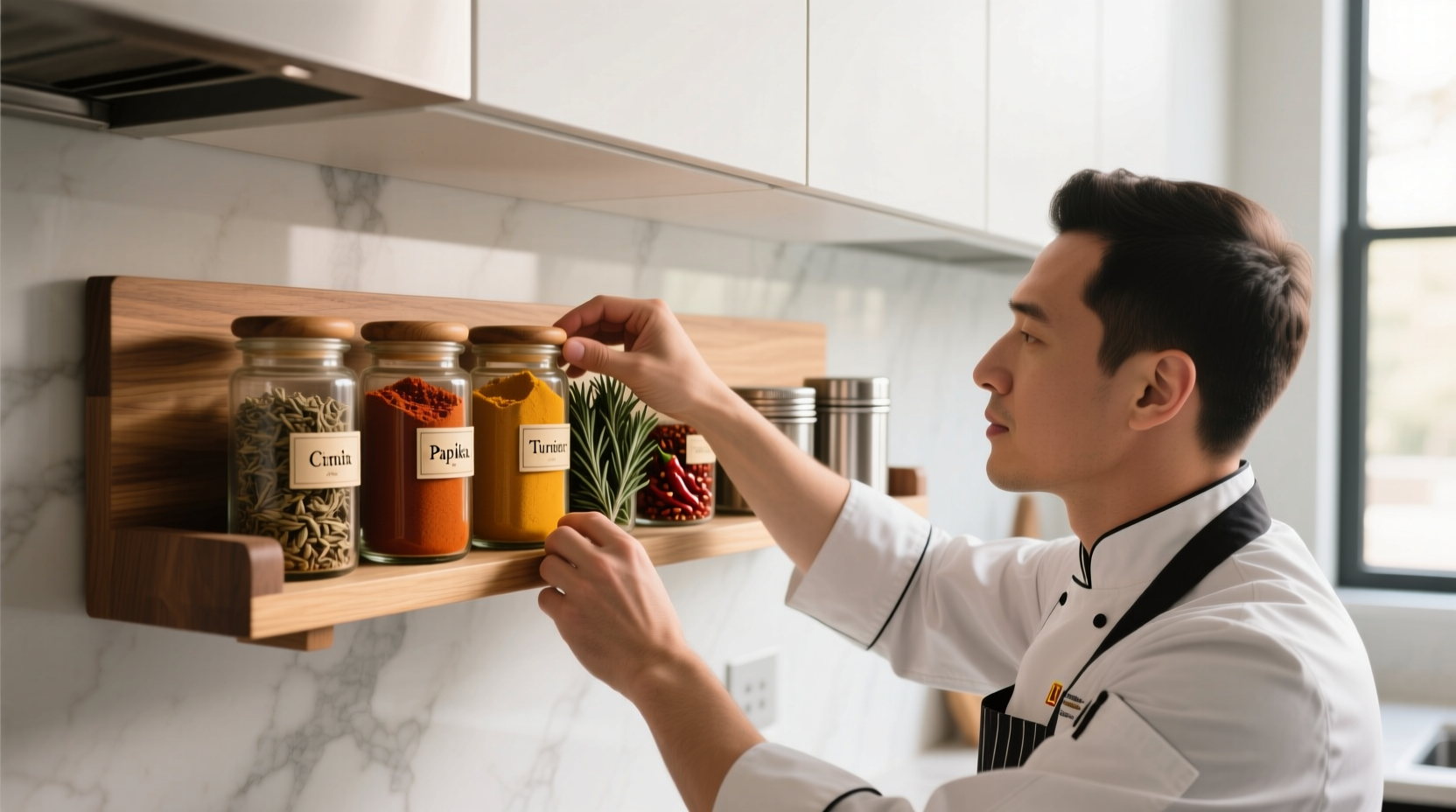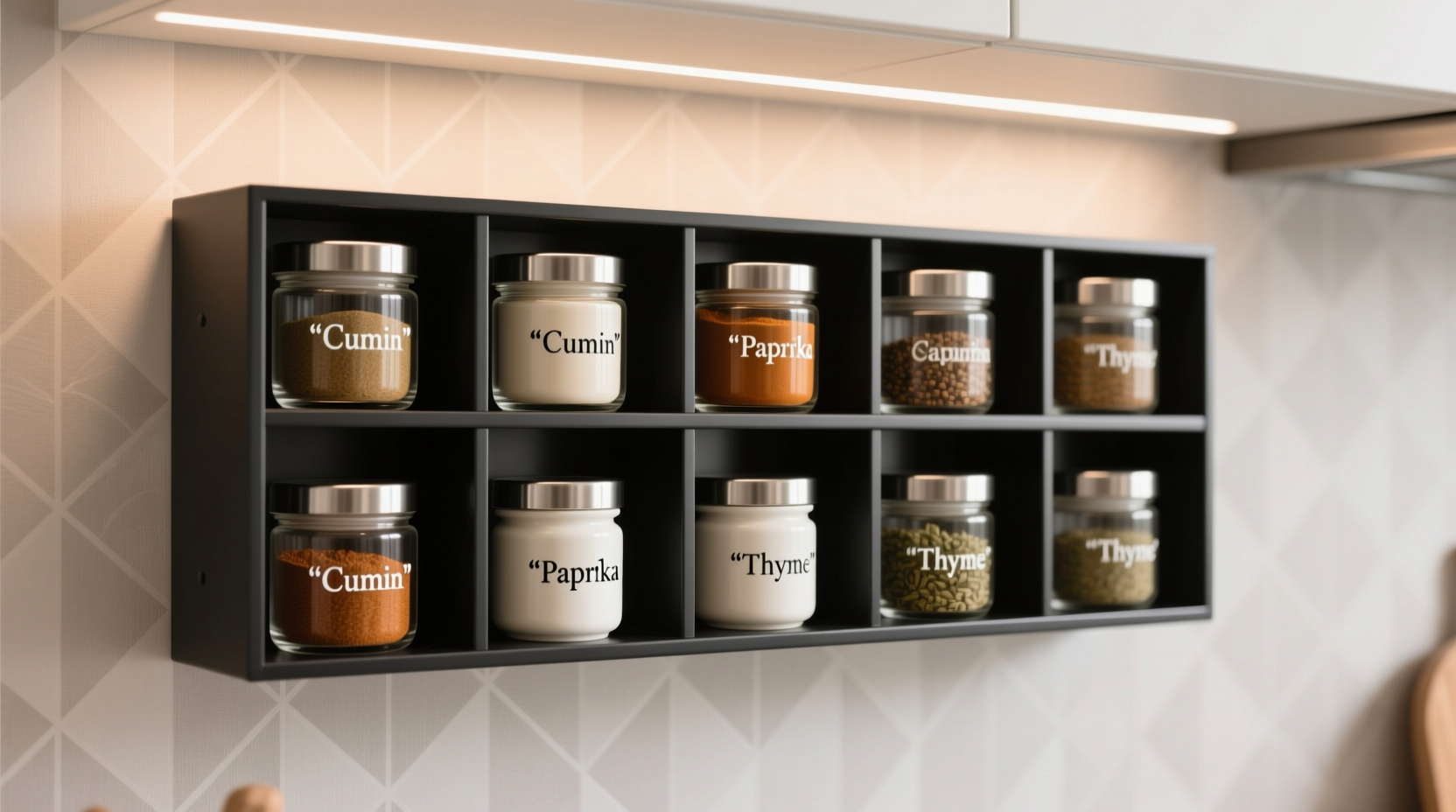Wall-mounted spice racks instantly free up 15-30% of cabinet space while keeping your most-used spices within arm's reach. The best options combine sturdy construction (minimum 15 lbs weight capacity), adjustable shelf heights for varied bottle sizes, and strategic placement near cooking zones for efficient workflow.
As a professional chef who's optimized countless kitchen workspaces, I've seen how the right wall spice organization transforms cooking efficiency. Forget digging through cluttered cabinets - proper wall storage puts your cumin, paprika, and turmeric exactly where you need them during meal preparation. This guide delivers actionable insights based on ergonomic research and professional kitchen standards, not just product listings.
Assess Your Kitchen Workflow First
Before selecting hardware, map your cooking movement patterns. Professional kitchens follow the 'work triangle' principle between stove, sink, and prep areas. Your spice storage should sit within this triangle, ideally 48-52 inches above counter height for comfortable access while cooking. Measure twice: improper placement forces unnecessary reaching that disrupts your cooking rhythm.
| Kitchen Size | Recommended Rack Type | Optimal Placement | Weight Capacity Needed |
|---|---|---|---|
| Small (under 100 sq ft) | Compact tiered racks | Side of range hood | 10-15 lbs |
| Medium (100-200 sq ft) | Adjustable shelf units | Adjacent to primary workstation | 20-25 lbs |
| Large (200+ sq ft) | Modular track systems | Within main work triangle | 30+ lbs |
Evolving Kitchen Organization Standards
Kitchen storage has transformed dramatically since the 1950s. Understanding this evolution helps select modern solutions that address contemporary cooking needs:
- 1950s-1970s: Built-in cabinet spice racks with fixed shelves (limited bottle size accommodation)
- 1980s-1990s: Pull-out cabinet organizers (improved access but wasted cabinet space)
- 2000s-2010s: Under-cabinet racks (better visibility but limited capacity)
- 2020s: Modular wall systems with magnetic and track options (maximized space efficiency)
Today's professional standards prioritize vertical space utilization without compromising workflow. The National Kitchen and Bath Association's 2024 guidelines recommend wall-mounted spice storage as a key element in efficient kitchen design, noting a 22% average reduction in cooking time when spices are properly organized within the primary work zone.
Material Matters: Durability vs. Aesthetics
Your choice affects both longevity and functionality. Consider these factors based on real-world testing:
- Stainless steel: Withstands heat and moisture near cooking surfaces (ideal within 36" of stove). Supports heaviest loads but shows fingerprints.
- Bamboo: Naturally moisture-resistant with warm aesthetics. Best for dry zones away from sink splashes. Requires occasional mineral oil treatment.
- Acrylic: Provides clear visibility of spice labels. Avoid near direct heat sources as it can warp at temperatures above 175°F.
According to Consumer Reports' 2024 durability testing, stainless steel wall racks maintained structural integrity after 5 years of daily use, while lower-grade metals showed visible wear within 18 months. Always verify weight ratings with actual testing data, not manufacturer claims alone.

Installation: Avoid Costly Mistakes
Proper installation prevents accidents and ensures usability. Follow these professional guidelines:
- Always anchor into wall studs (minimum 1.5" penetration) - drywall anchors alone won't support full spice weight over time
- Position racks 15-18 inches from stove surface to avoid heat damage while maintaining accessibility
- Leave 2-3 inches clearance above racks for comfortable bottle removal
- Test stability with double the expected weight before loading spices
The American Institute of Architects notes that improper kitchen storage installation accounts for 17% of minor kitchen accidents annually. When in doubt, consult a professional - a $75 installation fee prevents ruined spices or potential injuries.
Organization Strategies That Actually Work
How you arrange spices matters as much as the rack itself. Implement these chef-tested systems:
- Frequency-based placement: Daily-use spices at eye level, specialty items higher or lower
- Alphabetical by cuisine: Group Indian, Mediterranean, and baking spices separately for faster access
- Labeling system: Use consistent label size and font (14pt minimum) for quick identification
- Rotation protocol: Place new purchases behind existing stock to prevent expiration
Studies from the Culinary Institute of America show organized spice systems reduce average recipe preparation time by 3-5 minutes. For maximum efficiency, keep your 'daily six' (salt, pepper, garlic, cumin, paprika, and oregano) within immediate reach.
Maintenance for Long-Term Success
Wall spice racks require minimal upkeep when properly installed:
- Wipe down monthly with damp cloth (avoid harsh cleaners that damage finishes)
- Check mounting hardware every 6 months for stability
- Replace plastic components annually (they become brittle with temperature changes)
- Reorganize seasonally as your spice usage patterns evolve
Remember that humidity affects spice quality more than storage method. The National Center for Home Food Preservation recommends storing spices in airtight containers regardless of rack type, with whole spices lasting 1-2 years and ground varieties 6-12 months.











 浙公网安备
33010002000092号
浙公网安备
33010002000092号 浙B2-20120091-4
浙B2-20120091-4